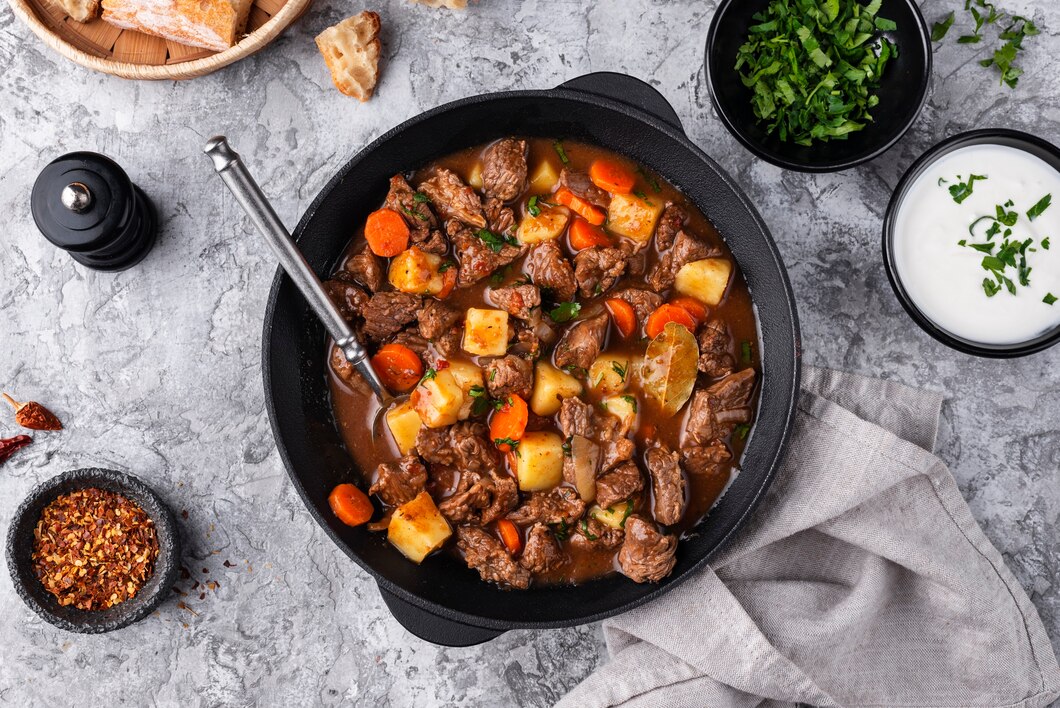When it comes to thickening sauces and gravies, flour is often the go-to ingredient. However, whether due to dietary restrictions, allergies, or simply a desire for variety, there are many alternatives to flour that can achieve the same creamy, thick consistency. Here are five excellent substitutes for flour in thickening sauces and gravies.
1. Cornstarch
What It Is:
Cornstarch is a fine, powdery starch made from corn. It is a popular thickening agent in many recipes due to its neutral flavor and effectiveness.
How to Use:
- Mix cornstarch with a small amount of cold water to create a slurry before adding it to your hot sauce or gravy. This prevents clumping.
- Use about 1 tablespoon of cornstarch for every cup of liquid you want to thicken.
- Bring the sauce to a boil after adding the slurry, then simmer until it reaches the desired consistency.
Advantages:
- Gluten-free and suitable for those with gluten sensitivities.
- Produces a clear, glossy finish, making it ideal for certain dishes like fruit sauces.
2. Arrowroot Powder
What It Is:
Arrowroot powder is a starch obtained from the root of the arrowroot plant. It is often used as a gluten-free thickener.
How to Use:
- Similar to cornstarch, mix arrowroot powder with cold water to form a slurry before adding it to the sauce.
- Use 1 tablespoon of arrowroot powder per cup of liquid.
- Avoid boiling after adding arrowroot, as it can lose its thickening power and become thin again.
Advantages:
- Provides a glossy, clear finish.
- Does not break down in acidic environments, making it suitable for fruit-based sauces.
3. Potato Starch
What It Is:
Potato starch is derived from potatoes and is another effective gluten-free thickening agent.
How to Use:
- Dissolve potato starch in cold water to make a slurry before incorporating it into hot liquids.
- Use 1 tablespoon of potato starch for every cup of liquid.
- Potato starch thickens quickly, so add it gradually and stir continuously.
Advantages:
- Maintains its thickening ability even at high temperatures.
- Adds a creamy texture without altering the flavor of the dish.
4. Rice Flour
What It Is:
Rice flour is made from finely milled rice and is a common ingredient in Asian cooking. It can also be used as a thickening agent for sauces and gravies.
How to Use:
- Create a slurry by mixing rice flour with a small amount of cold water.
- Use 2 tablespoons of rice flour per cup of liquid.
- Add the slurry to the sauce and cook until the desired thickness is achieved.
Advantages:
- Provides a smooth, silky texture.
- Suitable for those with gluten allergies or sensitivities.
5. Tapioca Starch
What It Is:
Tapioca starch, also known as tapioca flour, is extracted from the cassava root. It is commonly used as a thickener in both sweet and savory dishes.
How to Use:
- Mix tapioca starch with cold water to form a slurry.
- Use about 1 tablespoon of tapioca starch per cup of liquid.
- Tapioca starch thickens at lower temperatures, so it’s best to add it to warm, not boiling, liquids.
Advantages:
- Creates a glossy, translucent finish.
- Provides a light, slightly chewy texture, making it ideal for pie fillings and puddings.
Thickening sauces and gravies without flour is simple and effective with these five alternatives: cornstarch, arrowroot powder, potato starch, rice flour, and tapioca starch. Each of these substitutes offers unique advantages, from being gluten-free to providing a glossy finish or a creamy texture. Experiment with these options to find the best thickening agent for your culinary creations. Whether you’re accommodating dietary restrictions or simply exploring new ingredients, these flour substitutes will help you achieve delicious, perfectly thickened sauces and gravies.








